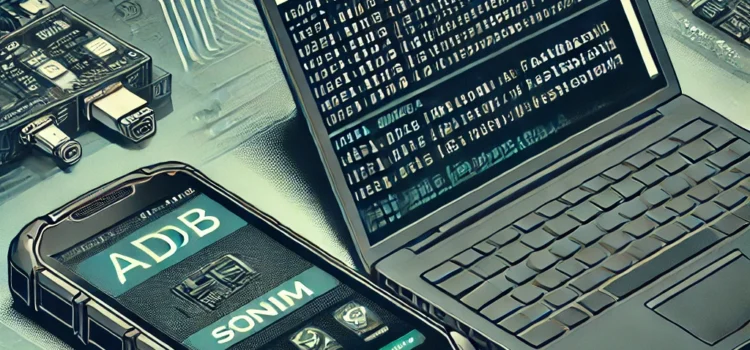
Sonim Updates with ADB and Fastboot, known for their durability and reliability, are frequently used in demanding environments. Keeping their firmware updated is essential to maintain security, performance, and compatibility with new features. While most updates can be done over-the-air (OTA), advanced users often prefer using Android Debug Bridge (ADB) and Fastboot for manual updates, particularly if the OTA updates aren’t available or if custom updates are required. This guide provides a comprehensive walkthrough on using ADB and Fastboot to update Sonim devices effectively and safely.
Why Use ADB and Fastboot for Sonim Updates?
Using ADB and Fastboot can offer several advantages for updating Sonim devices:
- Direct Control: Allows direct control over the update process, bypassing any OTA limitations.
- Recovery from Issues: Useful in cases where OTA updates fail, or the device is stuck in a boot loop.
- Customization: Ideal for users who want to install custom ROMs or modify the device software beyond official releases.
Prerequisites for Updating via ADB and Fastboot
Before starting, ensure you have:
- ADB and Fastboot Tools: Download the latest ADB and Fastboot platform tools from Android’s developer website.
- Firmware File: Obtain the specific firmware for your Sonim model. Ensure it’s the correct version to avoid compatibility issues.
- USB Cable: Use a reliable USB cable to connect the device to your computer.
- Battery Level: Ensure your Sonim device has at least 50% battery to avoid interruptions during the process.
- Backup Your Data: Updating with ADB and Fastboot may erase your device data, so it’s essential to back up important files beforehand.
Step-by-Step Guide to Updating Sonim Devices with ADB and Fastboot
Step 1: Install ADB and Fastboot
- Download the ADB and Fastboot tools, then install them on your computer.
- To verify the installation, open the command prompt (Windows) or terminal (macOS/Linux) and type:
This command should return the ADB version if installed correctly.
Step 2: Enable Developer Options on Your Sonim Device
- Open Settings > About Phone on your Sonim device.
- Tap on Build Number seven times to unlock Developer Options.
- Return to Settings, open Developer Options, and enable USB Debugging.
Step 3: Boot Sonim Device into Fastboot Mode
- Connect your Sonim device to your computer via USB.
- In the command prompt or terminal, enter:
This command should show your device as “connected” if ADB recognizes it.
- Now, type:
This will reboot the device into Fastboot Mode. You’ll see a screen indicating Fastboot is active.
Step 4: Verify Fastboot Connection
- In Fastboot Mode, check if your device is recognized by typing:
If it displays your device ID, you’re connected properly and ready to proceed.
Step 5: Flash the Firmware to Your Sonim Device
- Place the downloaded firmware file (often in
.zipformat) in the ADB and Fastboot folder on your computer. - Type the following command to flash the firmware:
Replace
firmware.zipwith the exact name of the downloaded file.- For some Sonim firmware files, you may need to flash individual components (like the boot, system, or recovery files) separately. In such cases, use these commands:
- Repeat for each component as needed.
- Wait for the process to complete. It may take a few minutes. Do not disconnect your device during this time, as it could result in an incomplete installation or a bricked device.
Step 6: Reboot Your Sonim Device
Once the flashing process is completed, reboot your device by typing:
This command will restart your Sonim device with the new firmware installed.
Troubleshooting Common Issues
- Device Not Recognized by ADB/Fastboot: Ensure that USB Debugging is enabled and that your drivers (if using Windows) are installed correctly.
- Firmware Compatibility Issues: Double-check that you’re using the correct firmware file for your Sonim model to avoid compatibility issues.
- Stuck in Bootloop After Update: If your device gets stuck in a bootloop, try re-flashing the firmware or accessing Recovery Mode to perform a factory reset.
Safety Tips for Using ADB and Fastboot
- Backup Data Regularly: Updating via ADB and Fastboot often requires a factory reset, which wipes data.
- Use Correct Commands: Mistyping commands or using incorrect firmware can cause irreversible issues.
- Ensure Stable Connection: A reliable USB connection is crucial to avoid update interruptions.
Conclusion
Mastering Sonim updates with ADB and Fastboot can empower you to take full control of your device’s software. By following the steps outlined in this guide, you can ensure that your Sonim device remains secure, functional, and up-to-date, regardless of OTA availability. This method provides a flexible and reliable alternative for advanced users who need hands-on control over their devices.
Whether you’re performing a simple update or recovering your device from an error, ADB and Fastboot offer valuable tools to manage your Sonim device confidently and effectively.













